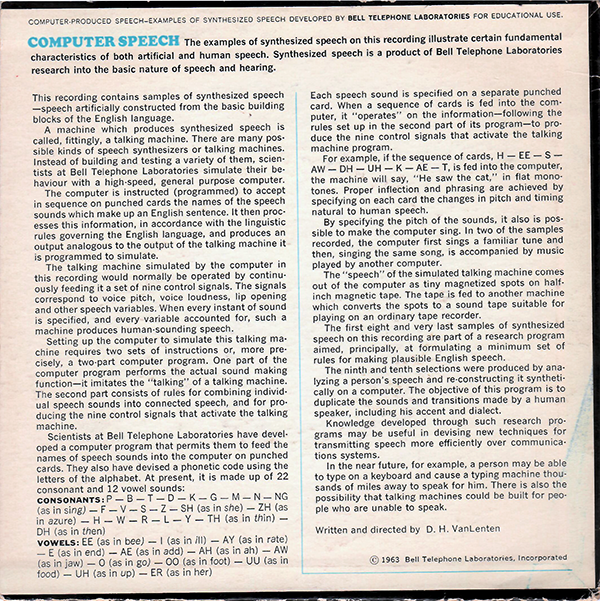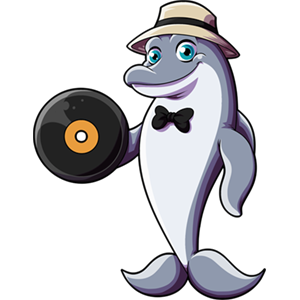In 1963, Bell Telephone Laboratories released a groundbreaking record titled “Computer Speech,” which featured synthesized speech created by one of the earliest computer speech synthesis systems. This landmark achievement in the field of computer science was written and directed by D.H. VanLenten and represented a significant milestone in the development of speech synthesis technology.

Bell Telephone Laboratories, or Bell Labs for short, was a research and development organization owned by the American Telephone and Telegraph Company (AT&T). Founded in 1925, Bell Labs was instrumental in the development of numerous technologies, including the transistor, the laser, and the UNIX operating system. It was at Bell Labs that many of the pioneers in the field of computer science, such as Claude Shannon and John Bardeen, conducted their groundbreaking research.
In 1961, physicist John Larry Kelly, Jr. and his colleague Louis Gerstman used an IBM 704 computer to synthesize speech, creating what they called a “voice recorder synthesizer” or vocoder. One of the most famous demonstrations of their vocoder was the synthesized rendition of the song “Daisy Bell”, with musical accompaniment from Max Mathews. This event was a major milestone in the history of Bell Labs and is one of the earliest examples of synthesized speech.

Interestingly, science fiction author Arthur C. Clarke happened to be visiting Bell Labs at the time of the demonstration. Clarke was so impressed by the technology that he included a similar scene in his screenplay for the novel 2001: A Space Odyssey. In the book and movie, the HAL 9000 computer sings “Daisy Bell” as astronaut Dave Bowman shuts it down.
The work of Kelly, Gerstman, and Mathews paved the way for the development of the speech synthesis technology used in the “Computer Speech” record two years later. The computer used by Bell Labs to generate the speech was an IBM 704, which was a mainframe computer that had been introduced in 1954.

To create the synthesized speech for the “Computer Speech” record, Bell Labs researchers used a technique called formant synthesis, which involves generating the sounds of speech by simulating the resonances of the human vocal tract. The vocal tract was modeled as a set of resonant filters, known as formants, that were used to shape a sound wave generated by a noise source. The formants were designed to mimic the resonances of the human vocal tract for different vowel sounds, and by combining different formants, it was possible to create a wide range of speech sounds.
The instructions for manipulating the formants to produce the speech sounds were encoded onto punched cards, which were fed into the IBM 704 computer using a card reader. The computer would execute the instructions encoded on the cards, generating the speech sounds based on the formant synthesis algorithm.
The resulting speech was then recorded onto magnetic tape, and the “Computer Speech” record was produced from these recordings. The record contained a variety of synthesized speech samples, including the digits 0 through 9, the vowels, and various consonant sounds.

The significance of the “Computer Speech” record cannot be overstated. It represented a breakthrough in the field of speech synthesis, demonstrating that it was possible to generate speech using a computer. The development of this technology laid the foundation for the numerous speech synthesis systems that would follow in the decades to come.
Today, speech synthesis is an essential technology that is used in a variety of applications, including voice assistants, GPS navigation systems, and text-to-speech software. The “Computer Speech” record stands as a testament to the pioneering work of the Bell Labs researchers who made this technology possible, and it remains a fascinating artifact of the early days of computer science.
Courtesy of Nokia Corporation and AT&T Archives © 1963 Nokia. Al Rights Reserved
